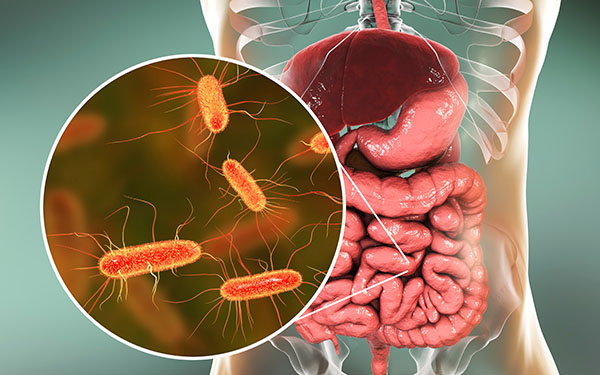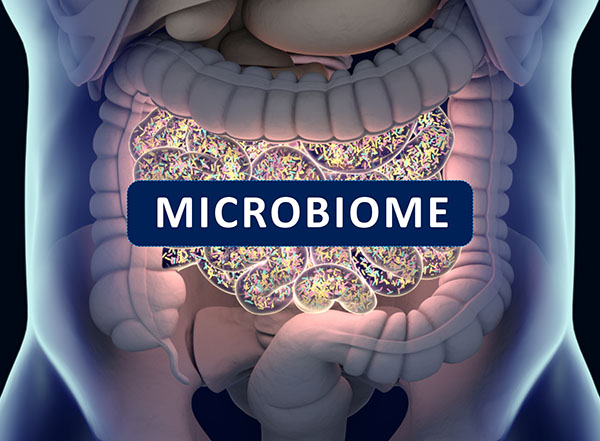Unlocking the role of amino acids in Autism Spectrum Disorder (ASD): A review of the evidence
04/19/2025 / By Olivia Cook

- Amino acids are critical to brain function and have been linked to Autism Spectrum Disorder (ASD), with imbalances potentially affecting symptoms, like sensory overload and social challenges.
- Studies highlight altered levels of key neuroactive amino acids, including glutamate, GABA and tryptophan, suggesting disruptions in brain signaling and metabolism.
- Two major studies (one global review and one focused on Southern China) have found differing amino acid patterns in ASD, with both excesses and deficiencies potential affecting behavior and symptom severity.
- Amino acid profiles could serve as diagnostic tools, helping detect ASD earlier and guide personalized treatment options, such as amino acid supplementation or other targeted therapies.
- Further research is needed to confirm these findings, standardize testing methods and explore the potential of amino acids for managing ASD.
In the complex world of Autism Spectrum Disorder (ASD), science is uncovering new clues – one molecule at a time. Researchers are increasingly focusing on a group of substances that play a crucial role in your body every day: amino acids. These essential building blocks of proteins are gaining attention for their potential role in the development and management of autism. (Related: Key amino acids and their important role in your health.)
Two major studies – one, a review of global research published in Amino Acids in September 2016, and another large-scale investigation published in the Journal of Autism and Development Disorders (JADD) in January 2023 – have started to reveal how amino acids might contribute to ASD. This emerging body of research suggests that understanding amino acids in greater detail may not only help explain autism but could also lead to better diagnostic methods and treatments.
Amino acids: The unsung heroes of brain chemistry
Amino acids are more than just the building blocks of proteins. Some of them act as neurotransmitters – or chemical messengers – that help brain cells communicate. These neurotransmitters are involved in everything from regulating mood to controlling learning and memory.
In people with autism, levels of certain amino acids in the blood appear to be significantly different to those in individuals without autism. Some amino acids are present in excess, others in too little quantity and some behave in surprising ways that might explain certain symptoms or behaviors often seen in ASD. Understanding these differences could be key to unlocking how autism develops and how it could be managed in the future.
Study 1: Mapping the science so far
A major review published in Amino Acids pulled together decades of research, focusing on a group of key neuroactive amino acids – those that directly impact brain activity. Here’s what the review covered about some of the most studied amino acids:
- Glutamate: Known as the brain’s “excitatory (stimulating) messenger,” glutamate is crucial for learning and memory. However, too much glutamate can lead to neurotoxicity, damaging brain cells by overstimulating them. Some studies have found elevated levels of glutamate in people with autism, while others show reduced levels, suggesting that the role of glutamate in ASD might be more complicated than originally thought.
- Glutamine: Glutamine helps regulate glutamate levels and may play a role in reducing inflammation. Some research suggests that low levels of glutamine could be linked to ASD.
- Gamma-aminobutyric acid: GABA is the brain’s “calming agent” that helps counteract the excitatory effects of glutamate. Lower levels of GABA have been associated with ASD, potentially contributing to sensory overload and difficulty filtering information.
- Glycine: Like GABA, glycine also acts as a calming neurotransmitter. It plays a role in early brain development and researchers are exploring its potential as a therapeutic target for ASD.
- Tryptophan: Tryptophan is the precursor to serotonin, a neurotransmitter that helps regulate mood and social behavior. Many studies have found that lower levels of tryptophan are associated with autism but the most recent research suggests that the relationship may be more complex that initially thought.
- Taurine: Taurine is considered a “neuroprotector,” helping to balance brain activity. While some studies suggest elevated taurine levels in ASD, others find the opposite, though taurine’s potential protective role remains under investigation. (Related: Unsung hero: Taurine is one of the most amazing amino acids out there.)
- d-Serine: This amino acid is involved in glutamate signaling and has been linked to various psychiatric disorders, though research on its role in ASD is still limited.
The review also highlighted that inconsistencies in the study design – such as differences in age, sex, diet, medication and testing methods – have made it difficult to draw definitive conclusions. The authors suggest that future research should standardize these variables and use non-invasive methods, like saliva sampling, to make studies more accurate and feasible.
Study 2: A deep dive into Chinese children
In contrast, a more focused study conducted in Southern China examines the amino acid profiles of 110 children with autism and 55 typically developing children. Researchers analyzed 48 different amino acids and explored how they related to various clinical features of autism. Some of the key findings included:
- Elevated neuroactive amino acids: The study found significantly higher levels of GABA, glutamate and glycine in children with autism, reinforcing the idea of an imbalance between excitatory and inhibitory neurotransmitters in the brain.
- Lower levels of essential amino acids: Essential amino acids, like histidine, lysine, phenylalanine and tryptophan, were lower in children with autism. These amino acids are vital for various bodily functions and lower levels may be linked to dietary preferences or digestive issues, which are common in children with ASD.
- Unexpected findings related to tryptophan: Interestingly, the study found that children with higher levels of tryptophan tended to have more severe autism symptoms. This contradicts earlier studies, which suggested that lower tryptophan levels were associated with greater severity. The researchers speculated that the issue might be related to the body’s ability to process tryptophan into serotonin – not the amount of tryptophan itself/ Think of it like having all the ingredients, for a recipe but lacking the proper tools to cook them – tryptophan may be available but without the right “cooking” process, serotonin levels remain low.
- Markers for regression: The study also found lower levels of glutathione, an amino acid compound involved in protecting the brain from oxidative stress, were linked to chidren who had experienced regression – such as losing previously acquires skills, like speech or social interaction.
Why this matters
These studies represent a significant step toward understanding autism, offering insights that could eventually lead to better diagnosis and personalized treatment methods. In the future, amino acid profiles could serve as biomarkers for early diagnosis, helping doctors identify autism before major symptoms appear.
Personalized treatment plans could be developed by tailoring therapies based on individual amino acid levels. For example, supplements that balance glutamate or support serotonin production could become part of an ASD treatment plan.
While the findings are promising, it is important to remember that these studies only show correlation, not direct cause-and-effect relationships. Autism is influenced by many factors, including genetics, environment and even gut health. The Chinese study, for example, was observational, meaning it could not definitively prove that amino acid imbalances cause autism.
Nevertheless, the findings carry weight because they emerge from increasingly sophisticated research methods, such as liquid chromatography mass spectrometry (LC-MS/MS) and have been observed in diverse populations.
Autism is an incredibly complex condition but by examining the smallest molecules in the body, scientists are gaining clearer understanding of its underlying causes. Amino acids are not just passive participants in the brain – they are active players that could reveal important insights into the development of autism.
Watch this video about the benefits of amino acids for ADHD.
This video is from the Daily Videos channel on Brighteon.com.
More related stories:
Amino acids shown to be effective at treating brain injuries.
New study: Amino acids could heal brain damage.
Sources include:
Submit a correction >>
Tagged Under:
Amino Acids, autism, Autism spectrum disorder, autism truth, Brain, brain function, brain health, food science, mental, Mind, nutrients, research, supplements
This article may contain statements that reflect the opinion of the author


















